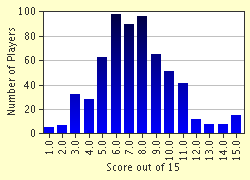Quiz Answer Key and Fun Facts
1. The Core: What is it made up of?
2. Mantle: What's the lower limit of the mantle?
3. Asthenosphere: What is its major function?
4. Lithosphere: What does "lithos" mean in Greek?
5. The Crust: What discontinuity delimits it from the mantle?
6. Hydrosphere: Which of the following is not a part of the hydrosphere?
7. Biosphere: Which of the following does not belong to it?
8. Atmosphere: What percent of the atmosphere is made up of nitrogen and oxygen?
9. Homosphere: According to what criterion is the atmosphere divided into the homosphere and the heterosphere?
10. Heterosphere: At what approximate height does this layer start?
11. Troposphere: Which of the following is not true about this layer?
12. Stratosphere: Which type of radiation is LEAST likely to be filtered by the ozone layer situated within this atmospheric region?
13. Mesosphere: Which of the following can be associated with this layer?
14. Thermosphere: What is this layer also known as?
15. Exosphere: Which of the following is true about this outermost atmospheric layer?
Source: Author
Mr5
This quiz was reviewed by FunTrivia editor
crisw before going online.
Any errors found in FunTrivia content are routinely corrected through our feedback system.


